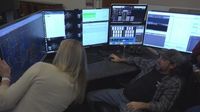As storms grow fiercer and more frequent across the United States, utility companies are racing to keep the lights on for millions of Americans. This week, Duke Energy announced significant strides in its efforts to modernize the electric grid in both Indiana and Florida, with a particular focus on self-healing technology—a smart system that promises to dramatically cut down on power outages and speed up recovery after severe weather.
On September 24, 2025, Duke Energy revealed that its investments in self-healing technology have been rolled out throughout Indiana, including Vigo County, and are now a key part of the company's storm response plan. According to a news release cited by WTWO/WAWV, these smart systems can automatically detect when power goes out, locate the source of the problem, and reroute electricity around the trouble spot. The goal? To restore as many customers as possible in the shortest time, even before repair crews arrive on the scene.
The impact has been nothing short of dramatic. In Vigo County alone, more than 6,700 outages were avoided in 2024 thanks to Duke Energy's self-healing technology. That translated to over 20,000 hours of saved outage time for residents and businesses. And the timing couldn't have been better—over 41% of those who benefited did so during major storms, when the risk and consequences of going without power are highest.
Statewide, the numbers are even more impressive. Across Indiana, the technology helped prevent more than 35,000 customer outages in 2024, saving a remarkable 150,000 hours of outage time. Two-thirds of those savings occurred during major storms, underscoring the vital role smart grid technology now plays in disaster resilience. According to Duke Energy, about 30% of its Indiana customers are now covered by these self-healing systems—more than double the coverage seen just two years ago. The company has pledged to expand this technology further, aiming to shield more communities from the worst effects of power interruptions.
"Adding self-healing technology is one of the many investments we continuously make to upgrade our Indiana electric system," said Stan Pinegar, Duke Energy Indiana President, in a statement quoted by WTWO/WAWV. "These investments have a direct and noticeable benefit for our customers, particularly during storms when many customer outages are avoided, allowing our crews to respond more quickly to other restoration priorities."
The story is similar in Florida, where Duke Energy met with state leaders in St. Petersburg on September 24 to discuss ongoing efforts to protect the power grid during the height of hurricane season. As reported by local media, the company showcased how self-healing technology is being integrated into both distribution control centers and mobile command units, giving crews the ability to detect outages and reroute power in real time.
Melissa Seixas, a Duke Energy executive, offered a relatable analogy: "It's almost like your GPS on your phone. You put in a route, but if there's an accident it will automatically reroute you. That is what self-healing technology does. It saves hundreds of millions of minutes of outages for our customers." Her comparison highlights just how transformative this technology can be for communities that, not so long ago, had to wait hours—or even days—for crews to manually locate and fix problems after a storm.
Grid improvements underway in Florida aren't limited to smart software. State Representative Linda Chaney pointed out that Duke Energy is also investing in hardening infrastructure. “Whether it's undergrounding, or it's replacing the wooden poles that we've seen snap in these hurricanes along Treasure Island, where it's all over the road,” she said, referencing the visible aftermath of recent storms. The company is weighing the pros and cons of each approach. As Seixas explained, "We can fix it 50 percent faster than underground, and then underground tends to go out 50 percent less than overhead, so it's a bit of a tradeoff. There is no silver bullet and the storms last year proved that."
During the St. Petersburg event, Duke Energy also recognized community partners, awarding $20,000 checks to five local organizations in appreciation of their work. It was a gesture that underlined the importance of collaboration—not just between utilities and governments, but with the broader community as well.
Duke Energy isn't the only power company betting big on technology. Florida Power & Light has announced plans to install more than 220,000 intelligent devices across its network. These devices are designed to isolate damage and restore power faster after storms, helping customers avoid outages altogether. Meanwhile, Tampa Electric is also making strides: the company is raising and protecting low-lying substations from storm surge and floodwaters—a direct response to the devastation wrought by Hurricane Helene. Tampa Electric is also enhancing outage map technology for better communication and providing mobile safety orientation for out-of-state crews, which speeds up restoration efforts when disaster strikes.
All of these efforts reflect a growing consensus in the utility industry: the old ways of doing things just aren't enough in an era of climate-driven extremes. Outages caused by hurricanes, tornadoes, and severe thunderstorms are becoming more frequent and more disruptive. Utility companies are under pressure from customers, regulators, and politicians to deliver more reliable service, even as the challenges mount.
Still, there are trade-offs. Undergrounding power lines, for example, can make them less vulnerable to wind and falling trees but can also make repairs more time-consuming and expensive when something does go wrong. Overhead lines, on the other hand, are easier to fix but more likely to be damaged in the first place. As Seixas put it, there is no "silver bullet." Every solution comes with its own set of pros and cons, and utilities must balance speed, cost, and reliability as they plan for the future.
The stakes are high. For residents of places like Vigo County, Indiana, and hurricane-prone communities in Florida, the difference between a quick recovery and days in the dark can mean spoiled food, lost business, and even threats to health and safety. That's why the push to expand self-healing technology and other grid improvements is being watched so closely—not only by industry insiders but by everyone who relies on a steady supply of electricity.
As Duke Energy and its peers continue to roll out these innovations, one thing is clear: the electric grid of the future will look very different from the one that powered the last century. With smart technology, hardened infrastructure, and a renewed focus on resilience, utilities are hoping to stay one step ahead of the next big storm—no matter where or when it hits.




